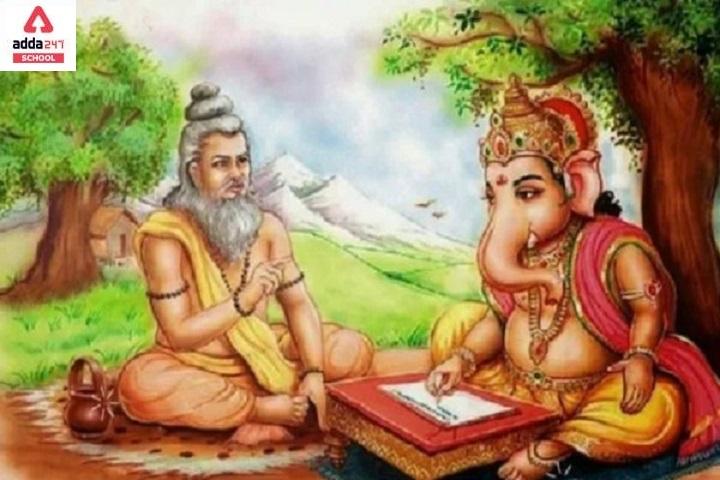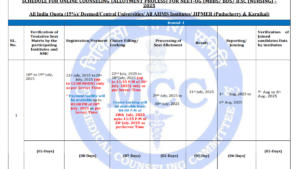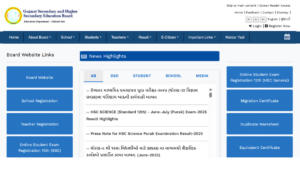Who wrote Mahabharat
The Mahabharata, one of the two major Sanskrit epics of ancient India, is traditionally attributed to the sage Vyasa. Vyasa is said to have composed the Mahabharata, which is a vast and complex epic that includes a wide range of stories, philosophical teachings, and moral lessons. It is one of the most important texts in Hindu literature and provides insights into Indian culture, religion, and history. The Mahabharata is believed to have been composed over a long period, and its final form likely took shape over several centuries.
Mahabharat written by ved vyasa in Sanskrit
The authorship of the Mahabharata is often credited to Vysa. Many attempts have been made to decipher its historical development and compositional levels. The Mahabharata was written by a renowned sage named Vyasa, who was the grandfather of the Pandavas and Kauravas.
Mahabharat Writer in English
Kisari Mohan Ganguli (also K. M. Ganguly) was an Indian translator, who is most known for the first complete English translation of the Sanskrit epic Mahabharata published as The Mahabharata of Krishna-Dwaipayana Vyasa Translated into English Prose between 1883 to 1896.
Who wrote Mahabharat in Hindi?
महाभारत के रचियता महर्षि वेदव्यास हैं किंतु महाभारत का लेखन गणेश जी द्वारा किया गया है ।
महाभारत के लेखकत्व का श्रेय अक्सर व्यास को दिया जाता है। इसके ऐतिहासिक विकास और संरचना के स्तर को समझने के लिए कई प्रयास किए गए हैं। महाभारत एक प्रसिद्ध ऋषि व्यास द्वारा लिखा गया था, जो पांडवों और कौरवों के दादा थे।
महाभारत को अंग्रेजी में किसने लिखा था?
किसरी मोहन गांगुली (केएम गांगुली भी) एक भारतीय अनुवादक थे, जिन्हें संस्कृत महाकाव्य महाभारत के पहले पूर्ण अंग्रेजी अनुवाद के लिए जाना जाता है, जिसे कृष्ण-द्वैपायन व्यास के महाभारत के रूप में 1883 से 1896 के बीच अंग्रेजी गद्य में अनुवादित के रूप में प्रकाशित किया गया था।
Who wrote Mahabharat in Telugu?
Mahabharat was originally written by Veda Vyasa in Sanskrit. Three poets first successfully translated the greatest epic into Telugu and are also famously known as Kavithrayam. They are Sri Nannaya, Sri Tikkana, Sri Yerrapragada.
Who wrote Mahabharat in Tamil?
Perundevanar was the Medieval Tamil poet who first translated Mahabharata into Tamil. He was otherwise called Baratham Paadiya Perundevanar. Bharatha Venda was offered by this Tamil poet. It is a 12,000-verse Tamil work over the epic of great Mahabharata.
Important Facts about Vyasa and Mahabharata
- The Mahabharat is one of India’s two major epics.
- Guru Purnima is a celebration devoted to Veda Vyasa.
- Satyavati and Rishi Parashara had a son named Vyasa.
- Veda Vyasa is one of the seven immortals, according to Hindu legend.
- Vyasa is the author of 18 important puranas.
Mahabharata
The Mahabharata (Sanskrit: Mahabharatam) is one of ancient India’s two great Sanskrit epics, the other being the Rmyaa. It tells the story of the Kurukshetra War between two groups of cousins, as well as the destinies of the Kaurava and Pandava princes and their descendants. It also includes philosophical and devotional content, such as a study of the four “life aims,” or purusharthas. The Bhagavad Gita, the story of Damayanti, the story of Shakuntala, the story of Pururava and Urvashi, the story of Savitri and Satyavan, the story of Kacha and Devayani, the story of Rishyasringa, and an abbreviated version of the Ramayana are among the most important works and stories in the Mahabharata.
History of Mahabharata
The majority of the Mahbhrata was presumably written during the 3rd and 3rd centuries BCE, with the oldest preserved pieces dating from around 400 BCE. The epic’s original events most likely occurred between the 9th and 8th century BCE. By the early Gupta period, the text had probably reached its final form (c. 4th century CE). Its longest version contains almost 100,000 lokas (each sloka is a couplet) and extensive prose paragraphs. The Mahabharata is nearly ten times the length of the Iliad and Odyssey combined, or around four times the length of the Ramayana, with 1.8 million words in all. The importance of the Mahabharata in the context of world civilization has been compared to that of the Bible, the Quran, Homer’s works, Greek drama, and William Shakespeare’s works, according to W. J. Johnson. It is sometimes referred to as the fifth Veda in Indian tradition. Shantanu, the Hastinapur emperor, was married to Ganga (the Ganges’ personification), with whom he had a son named Devavrat. Shantanu fell in love with Satyavati several years later, when Devavrat had grown up to be an accomplished prince. Satyavati’s father would not let her to marry the king unless the monarch guaranteed Satyavati’s son and successors the throne. Shantanu refused to deny Devavrat his rights, but when the prince learned of the situation, he rode over to Satyavati’s residence and pledged to relinquish the crown and live a life of celibacy.
Devavrat was given the name Bheeshm because of the horrible promise he had committed that day. Shantanu was so happy with his kid that he bestowed upon him the power to choose the time of his death. Shantanu and Satyavati eventually had two sons. Shantanu died not long after. Because Satyavati’s boys were still minors, Bheeshm and Satyavati were in charge of the kingdom’s affairs. The eldest son had died in a conflict with some gandharvas (heavenly creatures) by the time these sons reached adulthood, so the younger son, Vichitravirya, was enthroned. Bheeshm then kidnapped three princesses from another kingdom and transported them to Hastinapur to marry Vichitravirya. The eldest princess announced that she was in love with someone else, so she was released; the two other princesses married Vichitravirya, who died childless soon after. Satyavati begs her first son Vyasa to father children with the widows after Vichitravirya dies young and leaves no heirs. When the eldest, Ambika, sees him, she closes her eyes, and her son Dhritarashtra is born blind. When Ambalika sees him, she becomes pale and bloodless, and her son Pandu is born pale and ill. Satyavati asks Vyasa to try again due to the physical challenges of the first two children. Ambika and Ambalika, on the other hand, send their maid to Vyasa’s room. Vidura, Vyasa’s third son, is fathered by the maid. He is born healthy and grows up to be one of the Mahabharata’s wisest characters. He is King Pandu’s and King Dhritarashtra’s Prime Minister (Mahamantri or Mahatma). When the princes grow up, Dhritarashtra is about to be anointed king by Bhishma when Vidura intervenes and asserts that a blind person cannot be king, based on his political knowledge. This is due to the fact that a blind man is incapable of commanding and protecting his subjects. Because of Dhritarashtra’s blindness, the throne is then granted to Pandu. Pandu marries Kunti and Madri twice. Dhritarashtra marries Gandhari, a princess from Gandhara who wears a blindfold for the remainder of her life in order to endure the same pain as her husband. This enrages her brother Shakuni, who vows to exact vengeance on the Kuru family.
The work’s central theme is about a dynastic fight for the throne of Hastinapura, the Kuru clan’s country. The Kaurava and the Pandava are two of the family’s collateral branches that are involved in the conflict. Despite the fact that the Kauravas are the family’s senior branch, Duryodhana, the eldest Kaurava, is younger than Yudhishthira, the eldest Pandava. Both Duryodhana and Yudhishthira claim to be the heir apparent to the throne. The struggle comes to a head in the great battle of Kurukshetra, in which the Pandavas triumph. Complex conflicts of kinship and friendship arise as a result of the war, with examples of family devotion and obligation taking precedence over what is right, as well as the opposite.
Cultural Influence of Mahabharta
Krishna describes Arjuna’s duty as a warrior and prince in the Bhagavad Gita, using examples and analogies to elucidate on various Yogic and Vedantic concepts. As a result, the Gita is frequently referred to as a concise introduction to Hindu philosophy as well as a practical, self-contained guide to life. Swami Vivekananda, Netaji Subhas Chandra Bose, Bal Gangadhar Tilak, Mahatma Gandhi, and others utilised the poem to encourage the Indian independence fight in more recent times. It has also influenced contemporary Hindi writing, such as Ramdhari Singh Dinkar’s Rashmirathi, a Mahabharata retelling based on Karna and his battles. It was published in 1952 and received the Jnanpith Award in 1972.
Read More About:









 NEET UG 2025 Counselling Dates OUT! Chec...
NEET UG 2025 Counselling Dates OUT! Chec...
 Dr MGR Medical University Results 2025 R...
Dr MGR Medical University Results 2025 R...
 GSEB HSC Science Supply Result 2025 Down...
GSEB HSC Science Supply Result 2025 Down...









